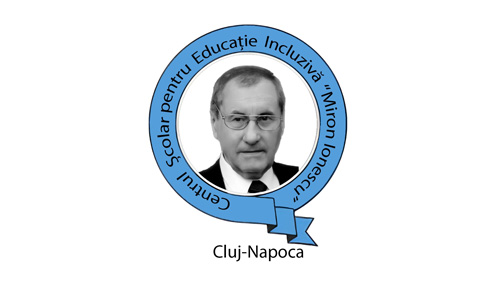Centrul Scolar pentru Educatie Incluziva ‘Miron Ionescu’
How school orientation for special education students helps clarify vocational aspirations
Published 31/10/2022

Published 31/10/2022
The Romanian educational system is divided into primary, secondary and high school. When students graduate the secondary school (the 8th grade) they have to pass an exam in order to attend next school level that can be high school or vocational school. By the moment of graduation students and their families have to make a decision about the profile of the job specific to the new school for which they will opt. Schools are providing career counselling and specific activities, but the final decision belongs to students and parents.
Students with special needs have two possibilities. One, in which students with special needs can participate in the national examination, at which they will benefit from adaptations of the examination conditions according to the individual attributes and those specific to their particular need. For the second possibility, students can enroll in a vocational school, where they will learn a specific profession, without taking the national exam.
Our school caters for students with special educational needs that are being diagnosed with mild, moderate and severe intellectual disabilities, with learning disorders or with associated deficiencies. Most of our students opt for classes at the Special Vocational School “SAMUS”, classes that prepare them for the professions such as: confectioner, tailor, barber/manicurist, construction worker, car painter, carpenter, gardener, plumber. Depending upon the evolution of the society those professions can change in time.
Essentially work skills
The process of counselling is carefully designed from the early years in school. Every week students attend specific activities designed to enhance their interests, abilities and responsibilities for the world of work. By the time they are in the secondary school they are already informed about different options and choices. It is in the upper secondary where students are guided to their future path according to their abilities.
Sometimes students’ and parents’ choices are not realistic as students’ abilities and their aims are not compatible. At this point a team of specialists from the school creates a plan and designs activities in order to help students and parents to identify the strengths and the weaknesses of the student in order to make an informed decision. But we are not successful all the time as sometimes parents decide to try to go for their own option. If that is the case and the student cannot follow their own chosen path, they still have a second option in the vocational school where they have to pass a practical exam after completing the second year. If they do not pass the exam the school decides to withdraw the student from his initial specialization to the most appropriate one.
Our students require a lot of support in the complex process of forming the decision-making skills required for career choice. Therefore, school orientation activities are very important.
The main focus of the counselling activities refers to:
Identifying and knowing the strengths for each beneficiary student; Examples of these activities are: All about me; creating a values map: which includes relationships, places, activities and jobs; Self map: Who am I? What do I like to do? What can I do? (Chores, tasks in school), How do I spend my free time? What is important to me? Self-esteem star: Listing three qualities, three things I want to change about me and three goals that I want to achieve in practicing my self-knowledge skills.
Pictures (left to right)
1.Self-analysis poster, 2. Working in bakery, 3. Working in hairdressing, 4. Working in a work environment, 5. Vocational Guidance class, 6. Vocational options.
Visits at workplaces and workshops are a very important component of the counselling in the upper secondary school. Students are watching specific operations and tools and they can interact with workers and ask questions. Sometimes they find out that the reality is different from what they’ve imagined and ask for guidance in order to identify another profession, according to their abilities and interests.
These activities try to integrate information about oneself with those about different professions in order to better manage the educational and vocational path. Also, parents are informed about the possibilities that exist for their children; they are oriented towards the best choice for the school orientation of their own child.
The wide range of specific activities we are carrying out in our school is a success model as most of our students continue to study after they graduate.
At the end of the school year, after the best decision for the student was taken, parents and school staff are completing the files for registration for the new school.